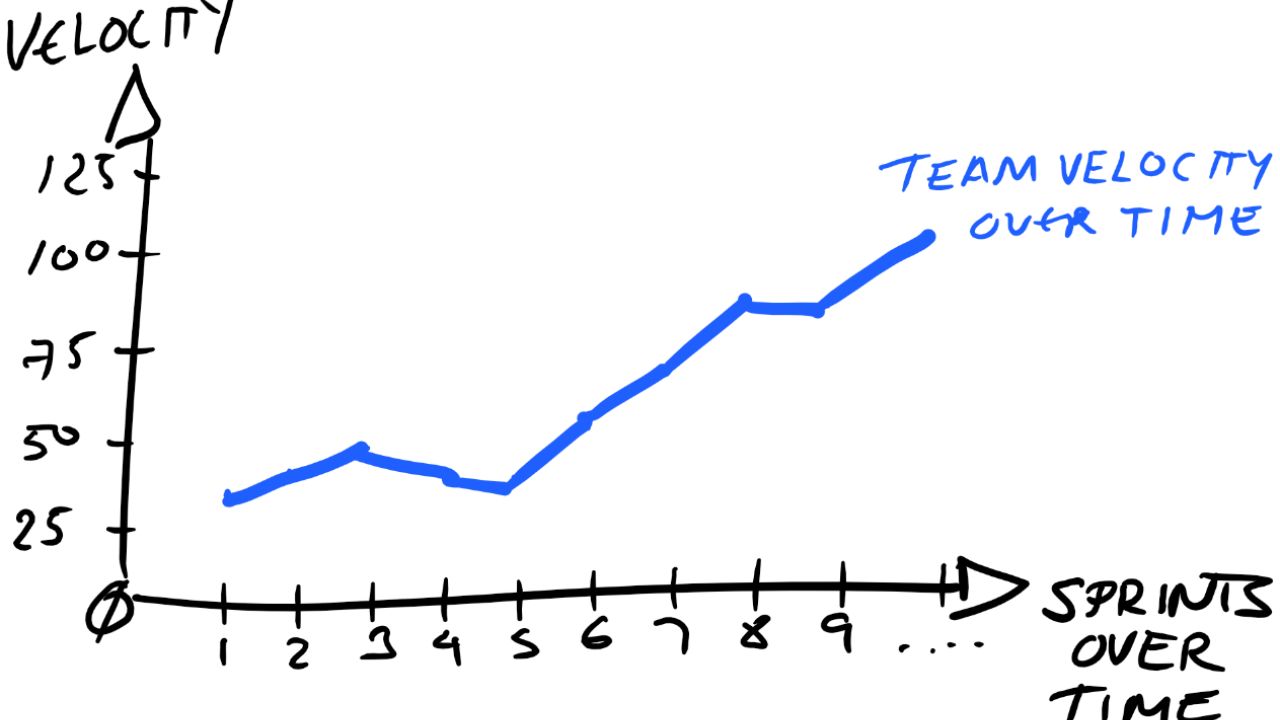The Secrets of Sprint Velocity in Scrum
Introduction to Sprint Velocity in Scrum
DEFINITION: Sprint velocity in Scrum measures the amount of work a team can complete during a sprint, the time-boxed period that Scrum teams use to deliver working software.
It is used to predict how much work a team can complete in future sprints and to track progress over time.
In this blog post, we will cover the basics of sprint velocity, including what it is, why it’s important, and how to calculate it with our free and simple app.
What is Sprint Velocity in Scrum?
Sprint velocity is a metric that is used to measure the amount of work that a team can complete in a sprint.
This metric is typically used to predict how much work a team can complete in future sprints and to track progress over time.
The goal of Sprint Velocity in Scrum is to help teams understand their capacity for work and to improve their ability to deliver working software.
To calculate Sprint Velocity in Scrum, we can use these ingredients: Number of User Stories completed, Estimated Effort per User Story, and Amount of work per user story.
Here’s the approach:
- Number of User Stories completed: This is the total number of user stories completed during the sprint.
- Estimated Effort per User Story: This is the estimated effort or story points assigned to each user story. It represents the complexity, effort, or size of the user story.
- Amount of work per user story: This could represent the actual time or effort spent on each user story. It’s the actual amount of work done per user story.
With these three pieces of information, you can calculate the team’s velocity.
The formula would be:

Below, you can calculate your team’s velocity using our Sprint Velocity Calculator.
Caluclate Sprint Velocity
Sprint Velocity Calculator
The number of user stories completed during the Sprint.
The estimated effort required to complete each user story, usually measured in story points.
The amount of work completed for each user story, measured in percentage of the estimated effort.
Why is Sprint Velocity Important in Scrum?
Sprint Velocity in Scrum is important for several reasons.
First, it helps teams understand their capacity for work and improve their ability to deliver working software.
By tracking sprint velocity over time, teams can identify patterns and trends in their work and make adjustments accordingly.
Second, Sprint Velocity in Scrum helps teams predict how much work they can complete in future sprints.
This can help teams set realistic goals for upcoming sprints and ensure that they are delivering working software on schedule.
Third, sprint velocity is a useful tool for Scrum Masters, Product Owners, and Developers in Scrum.
It can help them understand the progress of their team and make adjustments to their work accordingly.
How to Calculate Sprint Velocity in Scrum manually?
To calculate Sprint Velocity in Scrum manually, you first need to determine the number of user stories completed during the sprint.
Next, you need to estimate the effort required to complete each user story.
Then, you need to determine the amount of work completed for each user story.
Finally, you need to multiply these values together and divide the result by 100.
Here is an example of how to calculate sprint velocity:
Let’s say that a team completed 8 user stories during the sprint, with an estimated effort of 5 points per user story, and an amount of work completed of 2 points per user story. The team’s sprint velocity would be calculated as follows:
Velocity = (8 * 5 * 2) / 100 = 0.8
Who is Using Sprint Velocity, Who Creates it, and Who is Responsible for it?
Sprint velocity is used by Scrum teams to measure the amount of work that they can complete during a sprint.
It is typically created by the Scrum Master, who is responsible for tracking progress and making adjustments as needed.
Sprint velocity is a team metric and should be tracked by the entire team!
Product Owners and Developers in Scrum also use sprint velocity to understand the progress of their team and make adjustments to their work accordingly.
They are also responsible for ensuring that the sprint velocity is accurate and that the team is delivering working software on schedule.
Conclusion
Sprint velocity is a useful metric that can help teams understand their capacity for work and improve their ability to deliver working software.
By tracking sprint velocity over time, teams can identify patterns and trends in their work and make adjustments accordingly.
It is important for all the members of the team to understand, create, and be responsible for it.
Download Sprint Velocity Template in xlsx
Sprint velocity is calculated by summing up the effort estimates of all the user stories or backlog items completed by the team during a sprint.
Sprint velocity is important in Scrum as it helps the team and stakeholders forecast how much work can be completed in future sprints and enables better predictability.
A Scrum Master can use sprint velocity as a metric to identify trends, measure team performance, and facilitate discussions on process improvement and capacity planning.
Several factors can influence sprint velocity, including changes in team composition, external dependencies, scope changes, and the team’s overall level of experience and efficiency.
A Scrum Master can help improve sprint velocity by facilitating effective collaboration within the team, removing impediments, promoting continuous improvement, and ensuring that the team has a clear understanding of the sprint goals and priorities.
